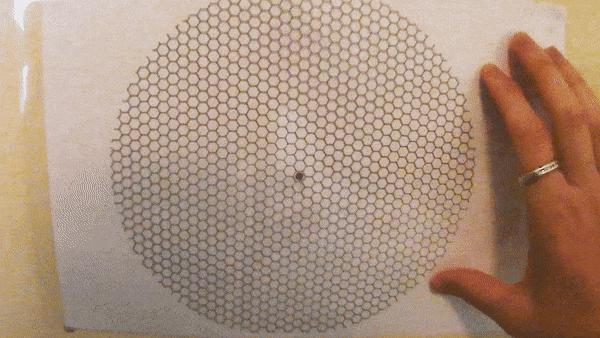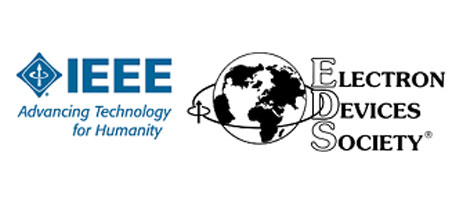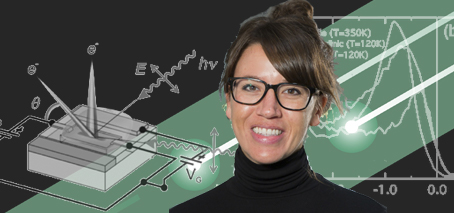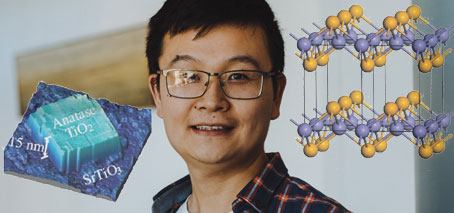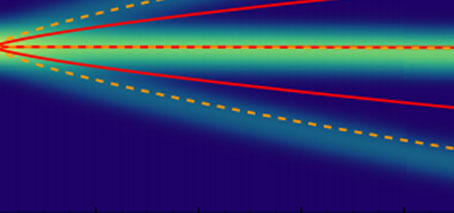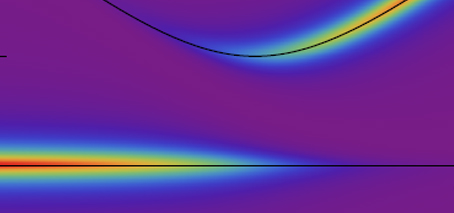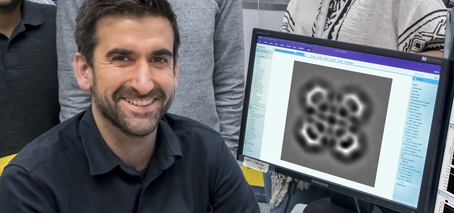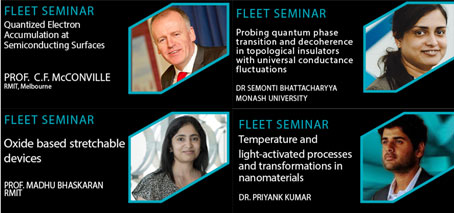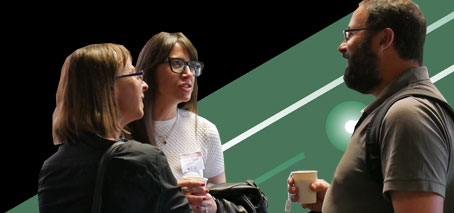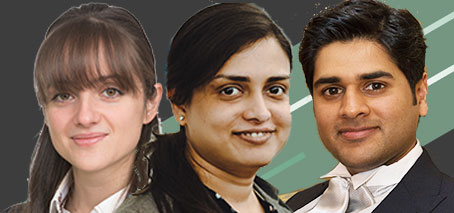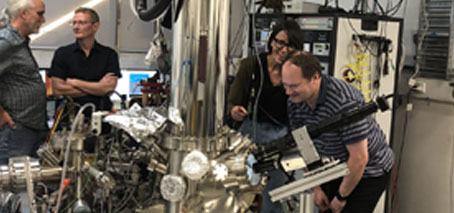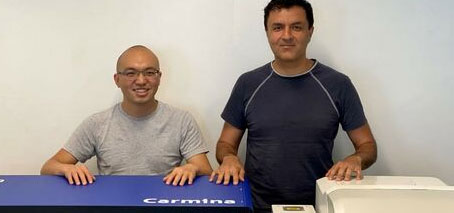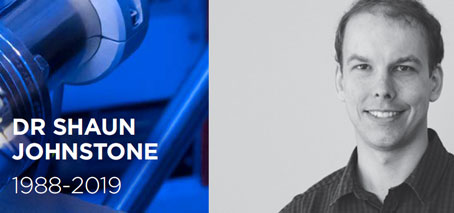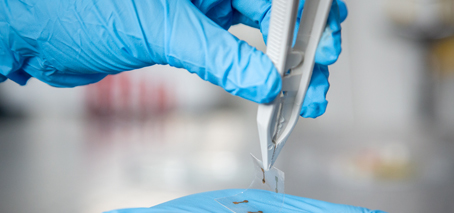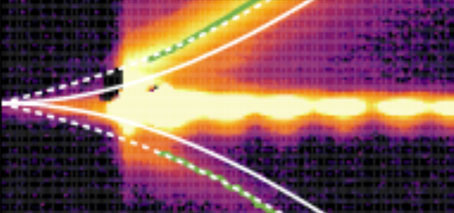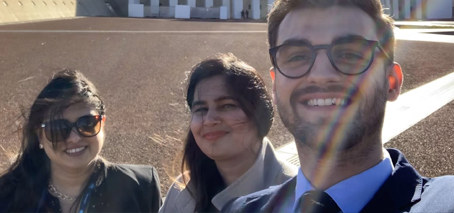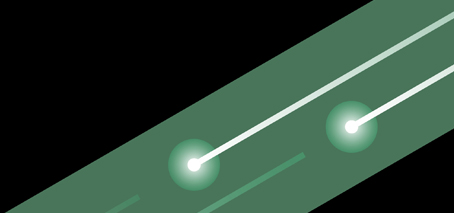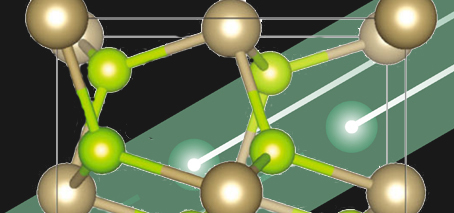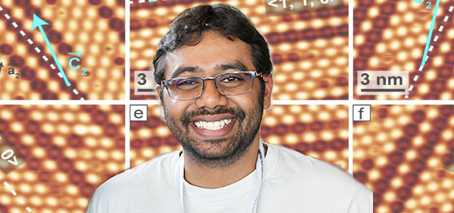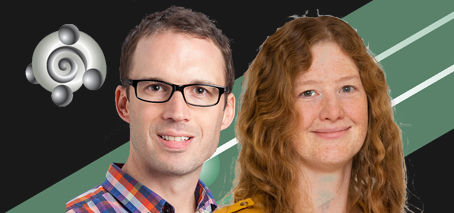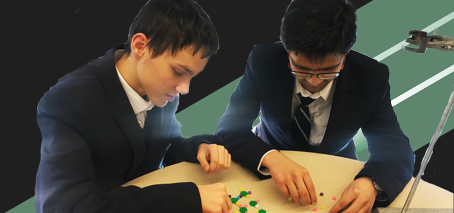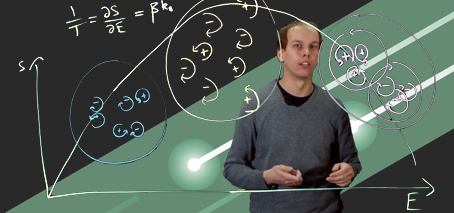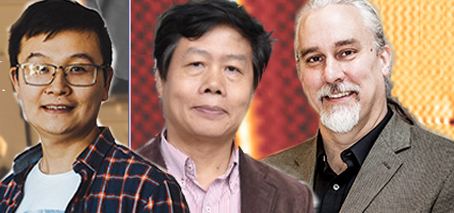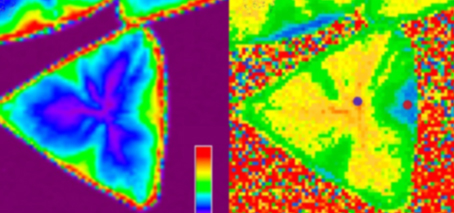A recent FLEET homescience exercise explained how simple geometric patterns printed on transparency (‘overhead projector sheets’, to those of us old enough to remember such technology), and overlaid at varying angles, produced a combined ‘Moire’ pattern of varying dimensions. Two sheets of repeating squares produces a Moire pattern of larger squares. Two sheets of repeating triangles produces a Moire pattern …
What comes after CMOS? An expert discussion
A panel of experts featuring Dr Paolo Gargini (formerly Intel, head of several international semiconductor roadmaps), Prof Michelle Simmons (UNSW, Director. ARC Centre for Quantum Computation and Communication Technology) and Prof Michael Fuhrer (Monash Uni., Director of ARC Centre of Excellence in Future Low Energy Electronics Technologies.) and a guided discussion about the future of electronics beyond CMOS and the role semiconductors and other materials …
New CI Julie Karel
It is a great pleasure to announce that Dr Julie Karel (Monash) is now a FLEET Chief Investigator. Dr Karel conducts research at the intersection of materials science and condensed-matter physics, to develop new materials for emerging low-energy nanoelectronic and magnetoelectronic devices. Within FLEET Dr Karel will pursue two research streams: Modification of materials through ionic liquid gating, towards FLEET’s goal …
Interfaces the key in atomically-thin, ‘high temperature’ superconductors
An international FLEET collaboration publishing a review of atomically-thin ‘high temperature’ superconductors finds that each has a common driving mechanism: interfaces. The team, including researchers from the University of Wollongong, Monash University and Tsinghua University (Beijing), found that interfaces between materials were the key to superconductivity in all systems examined. The enhancement of superconductivity at interfaces (interface superconductivity enhancement effect) …
Splitting quasiparticles with temperature: the fate of an impurity in a BEC
A new theoretical study at Monash University has improved our understanding of the interplay between quantum and thermal fluctuations (or excitations) in quantum matter. The study found that an impurity within a Bose-Einstein condensate (BEC) exhibits an intriguing energy spectrum as its temperature is raised above zero kelvin, with the ground-state quasiparticle splitting into a number of branches that depends …
Applying quantum-impurity theory to quantum fluids of light
A Monash-led study develops a new approach to directly observe correlated, many-body states in an exciton-polariton system that go beyond classical theories. The study expands the use of quantum impurity theory, currently of significant interest to the cold-atom physics community, and will trigger future experiments demonstrating many-body quantum correlations of microcavity polaritons. Exploring quantum fluids “Exciton-polaritons provide a playground in …
Putting artificial intelligence to work in the lab
Automated Scanning Probe Microscopy (SPM) controlled by artificial intelligence First demonstration of fully autonomous, long-term SPM operation An Australian-German collaboration has demonstrated fully-autonomous SPM operation, applying artificial intelligence and deep learning to remove the need for constant human supervision. The new system, dubbed DeepSPM, bridges the gap between nanoscience, automation and artificial intelligence (AI), and firmly establishes the use of …
Hosting research seminars in 2019
FLEET’s live-streamed seminars help share research results across the Centre, keeping members informed on latest FLEET research, and enhancing inter-node collaboration. Early-career researchers presenting the seminars gain valuable presentation experience, and benefit from immediate feedback on their research from diverse Centre members. In 2019, FLEET-wide live-streamed seminars were presented by: Dr Dan Sando (UNSW) Dr Jackson Smith (RMIT) Dr Maciej …
Hosting scientific meetings in 2019
FLEET supported significant international and Australian conferences in 2019, which was bookended by major, FLEET-hosted conferences at the end of 2018 (ICON2D-Mat) and beginning of 2020 (ICSCE). With new partner organisation the MacDiarmid Institute (NZ), FLEET co-organised the Conference on Signature of Topology in Condensed Matter in Italy, working closely with the International Centre for Theoretical Physics. Almost 120 researchers …
Three FLEET ECR Grant recipients
First recipients of FLEET ECR Grants Grants funding research trips to Italy, Singapore, US FLEET’s ECR Grants fund travel for ECRs and PhDs, developing networks and professional and scientific skills, including supporting travel to research facilities to learn new techniques, form new collaborations, or complete training. Of the 1st round’s eight applications, the Education & Training Committee decided to fund three: …
MacDiarmid visit
Simon Granville, a Principal Investigator of the MacDiarmid Institute, visited FLEET collaborators at RMIT (Lan Wang and Torben Daeneke), Monash (Michael Fuhrer, Mark Edmonds, Julie Karel), UNSW (Jan Seidel’s group) and the University of Wollongong (Xiaolin Wang and David Cortie) in February to plan upcoming exchanges as part of several FLEET-MacDiarmid research collaborations funded in the 1st round of reciprocal …
Studying phonon-polaritons in hBN
Phonon-polaritons in layered crystals have peculiar properties where they occur at the boundary between materials. In a new study led from UNSW, phonon-polaritons were studied in thin-layer hexagonal boron nitride (hBN) by combined scattering-type scanning near-field optical microscopy (s-SNOM) and Fourier transform infrared (FTIR) spectroscopy. Prof Kourosh Kalantar-zadeh’s multidisciplinary group at UNSW combined scattering-SNOM single-wavelength imaging and broadband scattering IR …
Shaun Johnstone 1988-2019
We lost a dear friend in 2019, with the passing of Shaun Johnstone. We are deeply saddened for the loss of this quietly brilliant, lovely young man, and for the grief of his wife, Melissa, family Phil, Judy, Grace and Mark, and his wide circle of friends in the physics community and beyond. Shaun was a brilliant physicist, with outstanding …
Open letter on bushfires and climate change
“Climate change has arrived, and without significant action greater impacts on Australia are inevitable.” From this week’s open letter on bushfires, signed by 80 ARC Laureates, including FLEET Director Prof Michael Fuhrer (Monash University School of Physics and Astronomy) read the letter | read coverage
Nano-thin flexible touchscreens could be printed like newspaper
Researchers have developed an ultra-thin and ultra-flexible electronic material, able to be printed and rolled out like newspaper, for the touchscreens of the future. The touch-responsive technology is 100 times thinner than existing touchscreen materials and so pliable it can be rolled up like a tube. To create the new conductive sheet, an RMIT University-led team used a thin film …
Ghostly particles detected in condensates of light and matter
Australian research collaboration makes first detection of ‘ghost particles’ from Bose-Einstein condensates made of light and matter. The ANU/Monash University collaboration study: Observed ‘quantum depletion’ for the first time in a non-equilibrium condensate Discovered that ‘light-like’ condensates don’t behave as we would expect Observed ‘ghost’ excitations arising from quantum depletion for the first time. Quantum depletion observed for the first …
Extending FLEET’s engagement with school students
In 2019, FLEET cemented its relationship with Monash Tech School continuing to be involved as the school ramped up its activity. FLEET’s fruitful partnership with Monash Tech School features lab tours that provide hands-on science experiences for participating secondary students. From May to December, FLEET provided lab tours and activities on an almost weekly basis for Year 8 students from …
Three of FLEET’s future science leaders engaging with policy-makers
FLEET had a team of three researchers at Science meets Parliament (SMP) in November, talking to parliamentarians and other scientists from around the country, and perfecting the art of pitching to politicians. FLEET’s gun team were: Hareem Khan (RMIT), Oliver Stockdale (UQ) and Semonti Bhattacharyya (Monash). Science Meets Parliament is an annual meeting of Australia’s policy-makers with leading and emerging …
New Chairs announced
Welcoming new FLEET committee Chairs: Jeff Davis (Swinburne University of Technology) Equity and Diversity Committee Meera Parish (Monash Science) Outreach Jared Cole (RMIT University) Education and Training Torben Daeneke (RMIT) Industry relations David Cortie (University of Wollongong) Communications Thanks in particular to AIs Torben Daeneke and David Cortie for taking on these extra responsibilities. And huge thanks to the outgoing …
Discovery Projects $2.6m funding boosts FLEET research
Yesterday’s ARC Discover Project announcement saw FLEET research and researchers across three Australian universities awarded additional funding. Across five separate grants, over $2.6m new research funding went to projects and facilities led by FLEET researchers, complementing FLEET’s search to develop ultra-low energy electronics and boost related areas of research. Australia’s Minister for Education Dan Tehan yesterday announced almost $285 million …
Developing future scientific leaders
FLEET tops up external funding to build leadership skills Two of FLEET’s six strategic priorities are developing the next generation of science leaders, and fostering equity and diversity in STEM. Establishing career support initiatives for women in FLEET is an important milestone towards achieving each of these goals. FLEET will provide an environment for our early-career women to thrive and …
Clarivate highly-cited researchers
Congratulations to FLEET Chief Investigators: Kourosh Kalantar-zadeh (UNSW and RMIT) in chemistry, engineering, material science and medical devices Qiaoliang Bao (Monash University) in 2D materials science, graphene, photonics, optoelectronics and optical comms The Clarivate Analytics list identifies researchers ranking in the top 1% by citations for their field. The citation identifies influential researchers as determined by their peers around the …
New spin directions in pyrite an encouraging sign for future spintronics
first theoretical demonstration of both in-plane and out-of-plane spin highly energy- and direction- dependent behaviour discovered interplay between surface and bulk states plays a critical role in surface spin texture A Monash University study revealing new spin textures in pyrite could unlock these materials’ potential in future spintronics devices. The study of pyrite-type materials provides new insights and opportunities for …
Controlling the charge state of organic molecule quantum dots in a 2D nanoarray
Molecular self-assembly on a metal results in high-density 2D organic (carbon-based) quantum dot array with electric-field-controllable charge state Organic molecules used as nano-sized building blocks in fabrication of functional nanomaterials The achieved densities of the 2D organic quantum-dot arrays are an order of magnitude larger than conventional inorganic systems. A Monash University experimental study has fabricated a self-assembled, carbon-based nanofilm …
New Trans-Tasman research will aid search for sustainable future computing: FLEET-MacDiarmid partnership signed
Ahead of this weekend’s Climate Action Summit in New York, FLEET (Australia) and the MacDiarmid Institute (New Zealand) today announced a new partnership between the two science organisations, which share a mission to search for future low-energy electronics via the development of novel materials and devices. MacDiarmid is the premier centre for materials research in NZ, and co-Directors Professor Justin …
Introducing future electronics at secondary-school level
FLEET is currently helping to run a Year 10 ‘Future electronics’ course in partnership with John Monash Science School, Victoria. As well as covering the history of semiconductors and computing, and introducing students to Moore’s Law, the course will also be most students’ first introduction to quantum science, and will be Australia’s first introduction to superfluids and topological materials at …
Impossibly cool: Negative absolute temperatures
—by Dr Shaun Johnstone (Monash University) and Dr Tapio Simula (Swinburne University of Technology) One of the first things we learn about the absolute temperature scale, measured in degrees Kelvin, is that it’s impossible to get temperatures below Absolute Zero. But in a recent pair of FLEET studies into turbulence, researchers were working in a regime of precisely that: negative …
Experimental observation of a new class of materials: excitonic insulators
First observation of excitonic insulator New exotic state was first predicted in 1960s A University of Wollongong / Monash University collaboration has found evidence of a new phase of matter predicted in the 1960s: the excitonic insulator. The unique signatures of an excitonic insulating phase were observed in antimony Sb(110) nanoflakes. The findings provide a novel strategy to search for …
Lights out: Putting the ambient air oxidation of Monolayer WS2 to bed
Oxidation of monolayer WS2 in ambient requires exposure to light, and keeping samples in darkness can protect from oxidation Routine exposure to room lights (days) or light microscopes can cause significant oxidation, suggesting wide reaching implications for current and future studies of monolayer S-TMDs To protect monolayer semiconductor transition metal dichalcogenides (S-TMDs) from oxidation, they must be entirely shielded from …
Congratulations: Dianne Ruka, exceptional service award
Congratulations to FLEET’s outreach officer Dr Dianne Ruka, winning the Award for Exceptional Service to the Faculty of Science at Monash University. Dianne leads the education and training missions for FLEET across all seven collaborating universities, supporting staff and students across both Monash’s Science and Engineering Faculties, through science outreach programs. Since joining FLEET in 2017, Dianne has combined her …

